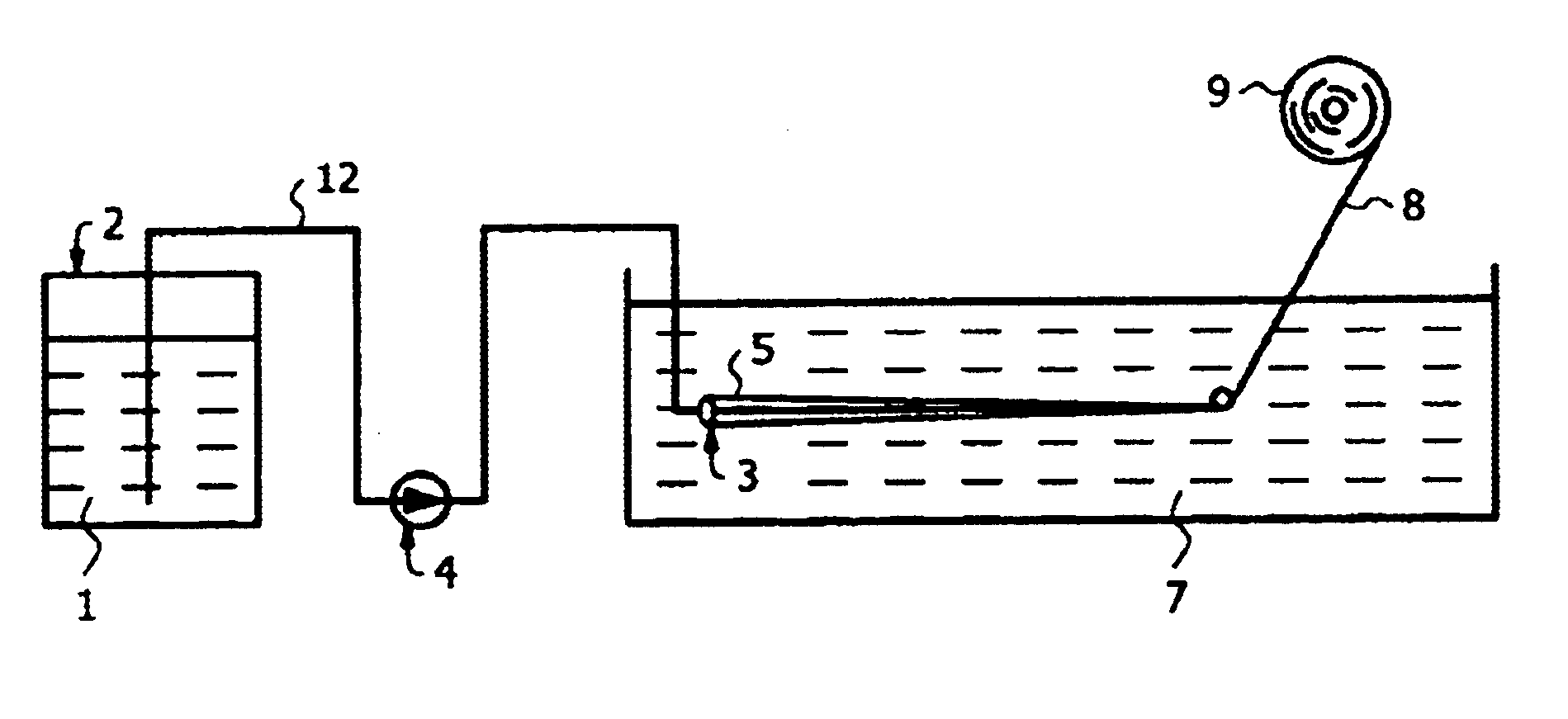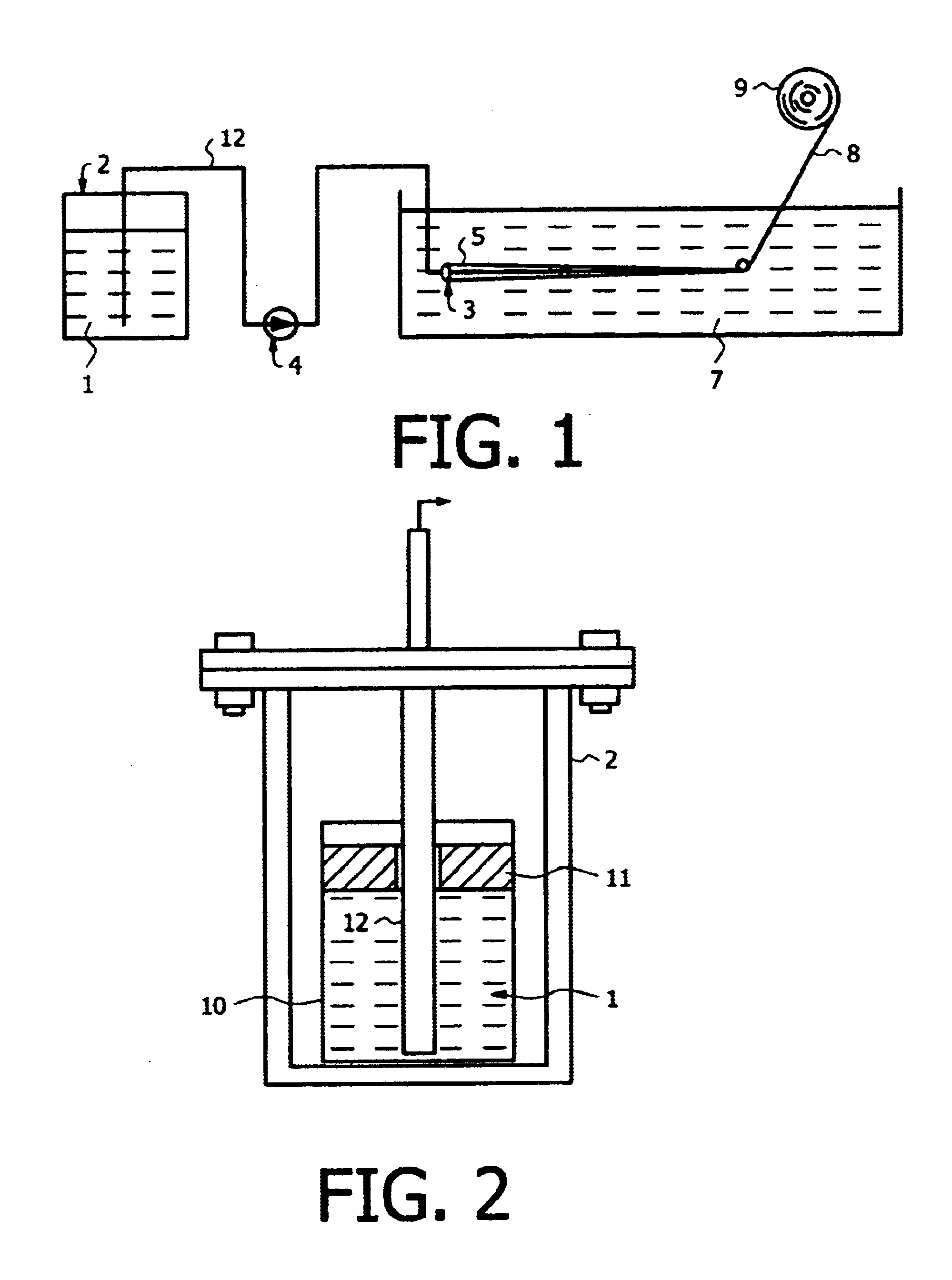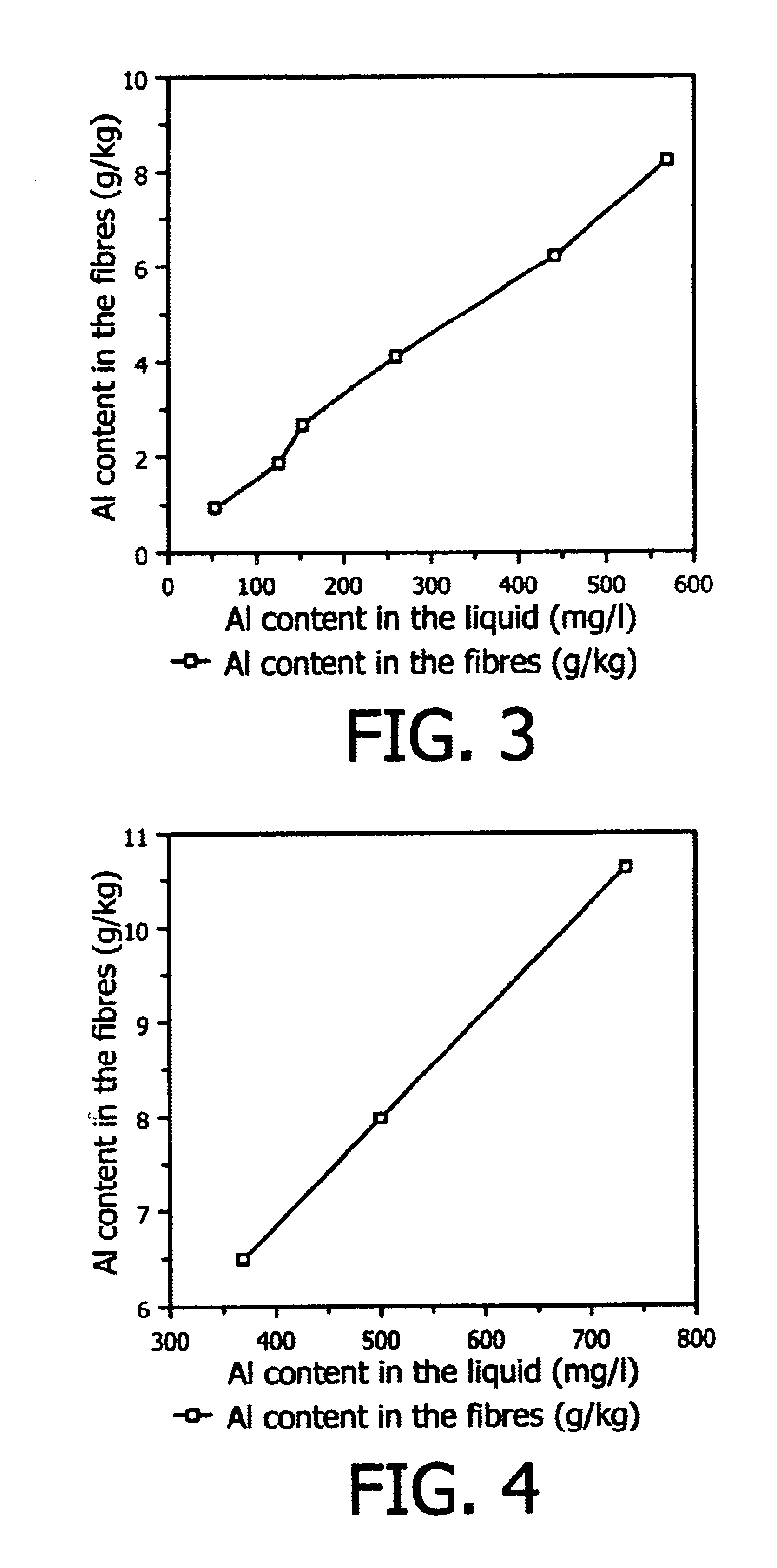Method of producing an absorbent material, an absorbent material and absorbent articles including the material in question
- Summary
- Abstract
- Description
- Claims
- Application Information
AI Technical Summary
Benefits of technology
Problems solved by technology
Method used
Image
Examples
embodiments
EXAMPLE 1
Spinning of CMC-Fibres Having Different Aluminum Contents
Equipment
Rayon spinning laboratory equipment was used, this equipment being shown in FIG. 1.
The equipment comprisedA pressure chamber, shown in detail in FIG. 2.A gear pump.A spinning nozzle.A rectangular plexiglass tank measuring 890×195×190 mm, to be used as an extrusion bath.
A beaker 10 containing a de-aerated carboxymethyl cellulose (CMC) solution 1 was placed in a pressure chamber 2. A lead weight 11 was placed on top of the solution. The chamber 2 was sealed and air having a pressure of 7.5 bars forced the CMC solution through a steel 12 and via a gear pump 4 to the spinning nozzle 3. The lead weight 11 prevented air from entering between the CMC-solution 1 and the steel pipe 12. The spinning nozzle 3 contained 20 holes 5, each having a diameter of 200 μm.
The CMC-solution 1 was extruded out into the extrusion bath 7 through the spinning nozzle 3. The extrusion bath 7 contained ethanol and aluminium chloride.
CMC-...
example 2
Producing CMC-Fibres with Different Baths
With the intention of discovering whether or not fibres could be formed in extrusion baths of mutually different compositions, tests were carried out with aluminium salts, iron salts, zirconium salts and magnesium salts in a bath with different solvents. The CMC used was Cekol 50000. The solvents tested were ethanol, methanol, isopropanol and acetone. The following bath compositions were tested:
Metal saltLiquid salt1. 4.4 g AlCl3—6H2O / liter solution95 vol-% ethanol + 5 vol-% water2. 4.4 g AlCl3—6H2O / liter solution95 vol-% methanol +5 vol-% water3. 4.4 g AlCl3—6H2O / liter solution85 vol-% acetone +15 vol-% water4. 4.4 g AlCl3—6H2O / liter solution95 vol-% isopropanol +5 vol-% water5. 5.3 g FeCl3—6H2O / liter solution95 vol-% ethanol + 5 vol-% water6. 5.3 g FeCl3—6H2O / liter solution95 vol-% methanol +5 vol-% water7. 5.3 g FeCl3—6H2O / liter solution95 vol-% acetone + 5 vol-% water8. 5.3 g FeCl3—6H2O / liter solution95 vol-% acetone + 5 vol-% water9. 6.0...
example 3
Polyelelectrolytes as Cross-Linkers
CMC-fibres we produced from Cekol 50000 in accordance with the invention, there being used a spinning bath containing polyelectrolytes dissolved in 80 vol % ethanol and 20 vol % water. The compositons of the different spinning are described below.
PolyelectrolyteTrade nameContent (weight %)Polyvinyl amineBasocoll (BASF)0.05PolybrenePolybrene (Aldrich)0.1(quaternarypolyamine)
Result
Fibres could be produced in both baths.
PUM
 Login to View More
Login to View More Abstract
Description
Claims
Application Information
 Login to View More
Login to View More - R&D
- Intellectual Property
- Life Sciences
- Materials
- Tech Scout
- Unparalleled Data Quality
- Higher Quality Content
- 60% Fewer Hallucinations
Browse by: Latest US Patents, China's latest patents, Technical Efficacy Thesaurus, Application Domain, Technology Topic, Popular Technical Reports.
© 2025 PatSnap. All rights reserved.Legal|Privacy policy|Modern Slavery Act Transparency Statement|Sitemap|About US| Contact US: help@patsnap.com



